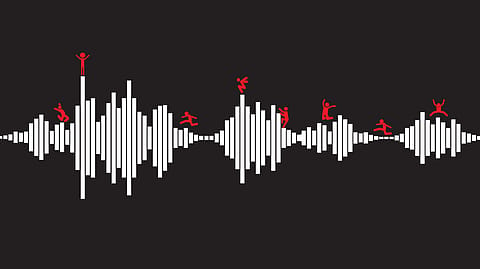Spotify hikes subscription plans by 28%; steeper hike in India than other markets
Recently, Spotify announced a 17-28% hike in its Premium subscription plans. These hikes have been introduced in markets across South Asia, the Middle East, Africa, Europe, Latin America, and the Asia-Pacific, leaving only the North America region.

Listening to Spotify is an experience that no YouTube Music or JioSaavn can replace. Reason? You get to listen to that cringe yet convincing ads that tempt you to buy the cheap Spotify Premium subscription when the entire purpose for using the app was to listen to some Dil Chahta Hai songs. These Premium subscriptions of the audio streaming giant just got a whopping price upgrade.
Recently, Spotify announced a 17-28% hike in its Premium subscription plans. These hikes have been introduced in markets across South Asia, the Middle East, Africa, Europe, Latin America, and the Asia-Pacific, leaving only the North America region.
This marks the first major hike in recent times across all tiers. The revision affects individual, duo, family, and student plans, with increases ranging from ₹10 to ₹50.
“Over the next month, Premium subscribers in multiple markets… will receive an email explaining what this update means for their subscriptions,” Spotify said in a blog post.
The Individual plan, which previously cost ₹119 per month, will now be available at ₹139, a ₹20 hike, translating to a 16.8% increase. The Duo plan, designed for two users in the same household, has seen a steeper jump of 20.1% or ₹30, going from ₹149 to ₹179.
Recommended Stories
Meanwhile, the Family plan, which supports up to six accounts, has witnessed the sharpest hike. It now costs ₹229 per month, up 27.9% from its earlier price of ₹179. Finally, the Student plan, which remains the most affordable tier, has risen from ₹59 to ₹69, a 16.9% increase.
For new users, the first two months will be offered at half the revised plan prices, with the full updated rates applicable from the third month onward.
The price adjustment is part of Spotify’s ongoing effort to convert more free users into paid subscribers. With rising content and operational costs, the company is looking to also boost revenue from the Indian market. In October 2023, Spotify had already restricted several features for users on the free tier in India, including repeat play and in-app lyrics access, shifting more functionality behind the subscription paywall.
An interesting point to note is that the price hike in India is steeper than in several other markets. For instance, while Spotify’s European users are expected to see a price increase of around 9%, Indian users are facing hikes of up to nearly 17%, making the adjustment significantly sharper in relative terms.
Today 3% of the world’s population is a Spotify subscriber. During the latest Q2 earnings call, Alex Norström, co-president and chief business officer, Spotify, said that the audio streaming giant anticipated to grow to 10-15% of the world’s population in the upcoming quarters.
During this Q2, Spotify reported a Monthly Active Users (MAU) of 69.60 crore in total that grew by 1.8 crore, exceeding Spotify’s expectations. Net subscriber count stood at 27.6 crore, up 12% year-on-year.
Despite the hike, Spotify's new pricing remains lower than that of its key competitor, YouTube Premium, which is priced at ₹149 per month for individuals, ₹299 for the family plan, and ₹89 for students. In contrast, JioSaavn is positioned more affordably, offering an individual plan at ₹89, a student plan at ₹49, and other plans starting as low as ₹5 per day. Debt-laden Gaana continues to offer its monthly plan at ₹99 plus 18% GST, with a yearly plan priced at ₹599 plus 18% GST.
Meanwhile, Amazon recently increased the cost of its Prime Video subscription by introducing a new ad-free add-on priced at ₹129 per month or ₹699 per year. However, its music offering remains bundled with the overall Prime subscription and is not charged separately.
Industry veterans have long indicated that the era of free music is nearing its end, and Spotify’s latest pricing revision is a clear sign of that shift.